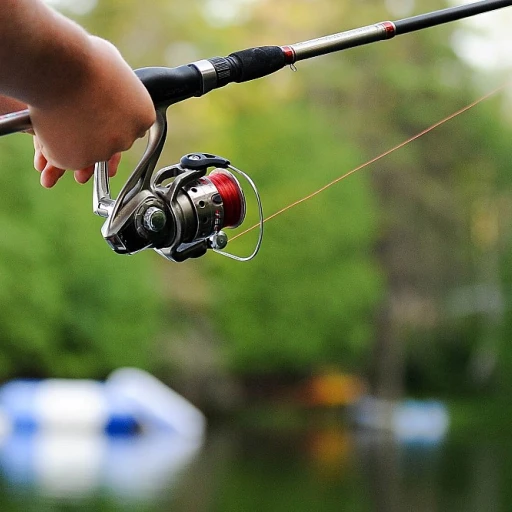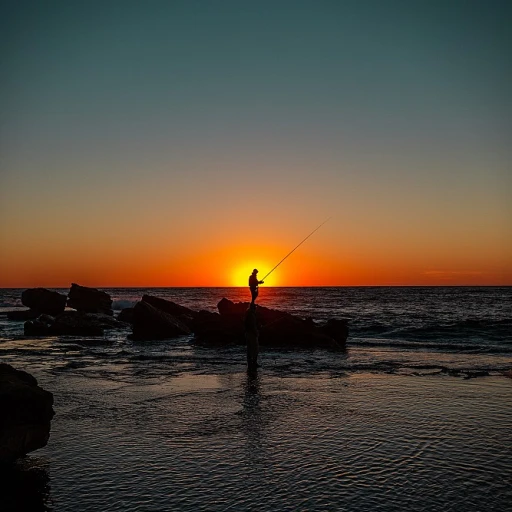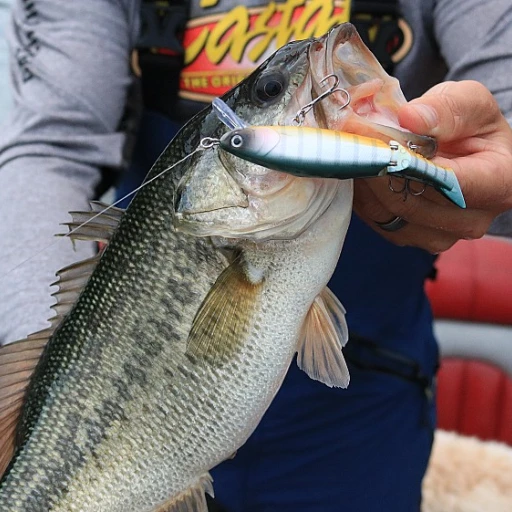Understanding red snapper: species and habitat
What is a red snapper?
Red snapper (Lutjanus campechanus) is a highly sought-after fish in both recreational and commercial fishing circles due to its delicious taste and vibrant color. Found predominantly in the Gulf of Mexico and the South Atlantic Ocean, red snapper is a deep-reef fish that's known for its red hues and distinct eye coloration.
Habitat and geographical distribution
These snapper species inhabit waters ranging from Florida, Texas, Louisiana, Alabama, and Mississippi, extending towards the Atlantic coast. They prefer deeper waters, typically around 30 to 200 feet, thriving on artificial reefs and natural bottoms like rocky outcrops and shipwrecks.
Juvenile red snappers often reside in shallower state waters before migrating to deeper federal waters as they mature. According to NOAA Fisheries, the Gulf of Mexico red snapper population has been on a steady incline due to focused conservation efforts.
Feeding behavior and growth
Red snappers primarily feast on a diet consisting of smaller fish, crustaceans, and cephalopods. Anglers notice they often exhibit aggressive feeding behaviors, which makes them a thrilling catch. This species can live up to 50 years, with larger individuals often being caught in deeper waters.
Understanding the red snapper lifecycle
Knowing the lifecycle of the red snapper is crucial for successful fishing. They spawn offshore between May and October, with peak spawning occurring in late summer. A female red snapper can release millions of eggs during this period, ensuring a healthy and sustainable population.
For more detailed insights on different fish types and their habitats, check out our guide on recreational fishing enthusiasts.
Best seasons for red snapper fishing
When to plan your red snapper fishing trip
Timing is everything when you're out to snag a prized red snapper. These fish have specific seasons and understanding them can make all the difference for recreational anglers.
Peak seasons and regional variations
Red snapper fishing season varies significantly depending on whether you're in state or federal waters and which part of the U.S. coastline you're angling.
- In the Gulf of Mexico, federal waters are generally open for red snapper from June through mid-July. It's a short window, so planning is crucial.
- State waters in places like Texas and Florida might offer different, sometimes longer, seasons. Texas, for example, usually maintains a year-round fishing season in state waters.
- For the Atlantic coast, the red snapper season is often set in summer, but be sure to check the specific dates annually as regulations can change frequently.
Remember, noaa fisheries has the latest information on federal regulations, while local agencies like the Florida Fish and Wildlife Conservation Commission provide updates for state waters.
Understanding noaa fisheries guidelines
NOAA Fisheries, together with various regional offices, such as the Gulf of Mexico Fishery Management Council and the South Atlantic Fishery Management Council, set annual limits and seasons to ensure sustainable fishing practices.
- Federal waters in the South Atlantic: The red snapper season here is quite restricted, often limited to just a few weekends a year.
- There's always a daily bag limit, typically around two fish per person, with a minimum size limit to let younger fish mature and reproduce.
This system aims to balance recreational fishing opportunities with conservation goals. These regulations are enforced vigilantly, so compliance is not just advised but required to avoid hefty fines.
Local time july: why it's crucial for snapper fishers
Late June and early July are prime times for red snapper in many areas. But why this period?
- Spawning Cycles: This is the peak of the spawning season, and red snappers are more active.
- Weather: The waters are typically warmer and clearer, offering better conditions for deep sea fishing and bottom longline techniques.
During these weeks, you'll find higher concentrations of red snapper on artificial reefs and naturally occurring reef fish habitats.
Keeping an eye on state and federal waters
The distinction between state and federal waters is not just bureaucratic; it significantly affects when and where you can fish. Example: In Alabama state waters, the red snapper fishing season might last longer, offering more flexible opportunities than the stricter federal limits.
Federal waters generally start at 9 nautical miles from the shoreline in the Gulf of Mexico, pushing out to 200 nautical miles, covering deep-sea fishing territories.
Keeping up with regulation changes
The regulatory environment for red snapper is always evolving. For up-to-date information, keep an eye on the NOAA Fisheries website or local state resources. Georgia, Alabama, and Louisiana often update their regulations separately from federal guidelines. Being informed ensures you stay in compliance and enjoy a successful fishing trip.
Essential gear for red snapper fishing
Rod and reel setup
For the angler setting out to catch red snapper, having the right rod and reel setup is non-negotiable. You're aiming for rods with a bit of backbone that can handle the tough fights and deep water. Most off-shore enthusiasts recommend a heavy action rod, paired with a sturdy, high-capacity reel. Many experienced fishers lean toward baitcaster reels for their precision and control. When it comes to line, opting for braided line with a heavier monofilament leader is a smart move.
Bottom longline gear
If you're out in federal waters, especially in the Gulf of Mexico or the South Atlantic, a bottom longline setup can dramatically improve your harvest snapper rate. This method involves deploying long lines with multiple baited hooks, which lie along the sea bottom where snapper frequently roam. Note that this gear often requires a vessel equipped with winches and significant storage capacity, making it more suitable for commercial fishers rather than casual anglers.
Artificial reef setups
Artificial reefs are a haven for snappers, providing both shelter and ample feeding opportunities. To take full advantage of these hotspots, you need gear tailored for reef fishing. This means sturdy hooks and lures that can handle the wear and tear of rocky environments. Heavy-duty bottom rigs with weights to keep your bait secured close to the reef structures are essential.
Deep sea tackle
Deep sea fishing demands specific gear that can withstand the pressure and the fight of big red snapper. For this, you'll need reels with powerful drags, typically lever drag or star drag models. Lightweight yet strong rods made from composite materials like graphite or fiberglass are ideal. Your hooks should be circle hooks with a size number suited for large fish, often between 6/0 to 10/0, paired with bait that’s irresistible to the snapper.
High-quality electronics
High-quality electronics can sometimes make the difference between a good day on the water and a great one. Sonar and fish finders can help locate schools of red snapper, especially those lingering around reefs. GPS systems are handy for marking productive spots, and digital gauges for tracking water temperature and depth can give you the edge.
Essential accessories
No red snapper fishing trip is complete without essential accessories like a reliable tackle box, bait rigs, and aerated live wells. Make sure your tackle box is stocked with various lures, extra hooks, sinkers, and pliers. Using live bait, such as pilchards or squid, can significantly improve your chances for a big catch, necessitating an aerated live well to keep bait fresh.
Fishing techniques for red snapper
Bottom Fishing Techniques
When it comes to red snapper fishing, bottom fishing is a favorite method among anglers. This technique involves dropping your bait to the bottom of the water column where red snappers tend to gather around structures like reefs and wrecks. A strong rod and reel combo, sturdy enough to handle the weight of both the bait and the fish, is essential. Bottom rigs often include a sinker, swivel, and hook setup, known as a "fish finder rig." Keep your bait natural, using squid, mackerel, or cigar minnows, to entice the red snapper.Drift Fishing
Drift fishing offers another effective tactic for catching red snapper. By allowing your boat to drift over prime habitats, your bait remains in the strike zone longer. This technique requires less active manipulation of the gear, relying instead on the natural movement of the boat to cover ground. It's a relaxed yet productive way to fish, perfect for the unpredictable currents found in the Gulf of Mexico and Atlantic waters.Trolling for Big Reds
Though not as common as bottom or drift fishing, trolling can snag some big red snapper. This involves dragging baited lines behind a moving boat, covering more ground and testing various depths. Use a combination of natural baits and artificial lures to attract the fish. The trolling speed should be kept slow to mimic the movement of red snapper's natural prey efficiently.Circle Hooks Save the Day
Using circle hooks is not just a best practice but often a requirement under various state and federal regulations. Circle hooks are designed to hook the fish in the mouth, reducing the chance of gut-hooking, which increases the survival rates of released fish. Expert anglers emphasize this ethical approach to ensure the sustainability of the red snapper population.Fishing Over Artificial Reefs
Artificial reefs have become prime spots for red snapper fishing. These man-made structures provide a habitat for reef fish in otherwise open waters. By dropping your line near these reefs, you'll increase your odds of a good haul. States like Florida have numerous artificial reefs specifically designed to enhance fish habitats and promote sustainable fishing practices.Night Fishing for Red Snapper
Many red snapper anglers swear by night fishing. The cooler temperatures and reduced boat traffic often result in more aggressive feeding behavior. Using lights to attract smaller baitfish can also lure in larger predatory fish, like the red snapper. Adjust your techniques and gear accordingly, using glow-in-the-dark or phosphorescent bait to make your offering irresistible.Regulations and limits for red snapper fishing
Understanding the rules on red snapper fishing
If you love red snapper fishing, you're probably aware that there are quite a few regulations to follow. These rules are in place to ensure the sustainability of red snapper populations, allowing anglers to enjoy fishing while keeping the environment healthy.Federal and state waters and seasons
The NOAA Fisheries and state agencies dictate the limits and seasons for red snapper fishing. In federal waters, the red snapper season generally opens based on population assessments and can vary each year. The Gulf of Mexico sees differing seasons across state waters in Alabama, Texas, Louisiana, Mississippi, and Florida, often leading to confusion among fishers. For instance, the 2022 Gulf of Mexico private angling season allowed fishing on weekends from June 1 through August 19. However, it's always a good idea to check the local time and regulations.Bag limits and size requirements
Federal waters impose strict recreational red snapper bag limits, typically set at two fish per person per day and a minimum size limit of 16 inches. In the South Atlantic region, the daily bag limit might be different, where one boat could harvest up to two red snappers per day. Each state can also set its own bag and size limits, often more restrictive than federal regulations. Georgia, for example, might enforce lower limits to protect local populations.Restricted gear types
Different gear types are allowed and restricted in red snapper fishing. Anglers are mainly permitted to use rod and reel in both state and federal waters. However, bottom longline gear is typically prohibited to reduce bycatch of grouper species and snapper grouper species. Always double-check specific gear regulations in both federal waters and state waters to make sure you're compliant.Conservation zones
Certain fishing zones are designated as conservation areas where fishing for red snapper could be completely restricted. These zones are established to help rebuild the red snapper population and protect them from overfishing. NOAA Fisheries has implemented temporary and long-term closures in certain areas to ensure that habitats for reef fish are safeguarded. It's crucial for anglers to respect these zones and fish responsibly.Reporting requirements
In some regions, harvest reporting is mandatory. This data helps NOAA and state agencies track fish populations and enforce regulations. For instance, the reporting program in Florida requires anglers to report each catch of red snapper through their online system. Not complying with these reporting requirements can result in penalties. Remember, staying well-informed on red snapper fishing regulations is not just about following the rules; it's a key part of sustaining our ocean resources for future generations. For more in-depth details, consult the local fisheries management council's guidelines or NOAA's official website.Top fishing spots for red snapper
Hotspots for targeting red snapper
When it comes to red snapper fishing, finding the right spots makes all the difference. One of the top locations is the Gulf of Mexico. This region is home to a bountiful population of red snapper, with areas off the coasts of Texas, Louisiana, Mississippi, Alabama, and Florida being particularly fruitful. According to NOAA Fisheries, federal waters in the Gulf of Mexico see higher harvest rates due to extensive reef fish habitats.
Prime locations in the South Atlantic
In the South Atlantic, from North Carolina down to Florida, red snapper populations thrive. Anglers often frequent artificial reefs and natural bottom structures. Georgia and South Carolina have notable spots for catching these prized fish. These areas are highly regulated by the Atlantic Snapper Grouper Fishery Management Council, ensuring sustainable fishery practices.
State versus federal waters
It's crucial to distinguish between state and federal waters when planning your red snapper fishing trip. State waters, stretching up to 9 nautical miles from shore, often have different regulations and seasons compared to federal waters. For instance, NOAA Fisheries outlines specific harvest seasons and bag limits for federal waters to help manage red snapper populations sustainably. Texas state waters allow for year-round red snapper fishing, which differs from federal regulations.
Exploring the best spots
Some standout locations for red snapper fishing include:
- Alabama's artificial reefs: Over 1,000 artificial reef structures make Alabama’s coastal waters a prime spot for red snapper.
- Florida's Panhandle: The area around Destin, FL, is famously known as the 'World's Luckiest Fishing Village' due to its plentiful red snapper populations.
- Louisiana's oil rigs: Offshore oil rigs provide excellent habitats for reef fish, making them hotspots for large red snapper.
- South Carolina's Charleston Deep Reef: This artificial reef system is a favorite among anglers targeting both red snapper and grouper species.
Techniques for locating red snapper
Success in red snapper fishing is not just about following the crowd. Using technology such as fish finders can greatly increase your chances. These devices help identify reef structures and schools of fish. Additionally, fishing the right depth is key. Red snapper typically inhabit waters ranging from 60 to 200 feet deep. When scouting a location, drifting over likely habitats and marking spots where you get bites can prove invaluable for future trips.
Expert tips for successful red snapper fishing
Veteran tips for landing the big reds
Catching red snapper isn't just about knowing when to go or what gear to use. It's an art form, a skill honed over countless trips to the Gulf of Mexico or the South Atlantic. Here are some nuggets of wisdom from seasoned anglers:
Know your waters
Red snapper thrive in specific environments. These fish often hang around artificial reefs, shipwrecks, and other underwater structures. NOAA Fisheries reports that red snapper populations are most dense in federal waters, but you can also find them in state waters, particularly around Texas, Florida, Louisiana, Alabama, and Mississippi. Using nautical maps and sonar can help locate these hotspots where big reds congregate.
Timing is everything
Red snapper season can vary widely by state and federal regulations. The South Atlantic Fishery Management Council and the Gulf of Mexico Fishery Management Council both set specific open seasons to protect the red snapper population. It's crucial to plan your trip during these windows. Many anglers report the best luck around dawn and dusk, as well as during the full moon.
Gear up properly
When it comes to fishing gear, go for a sturdy rod and reel setup designed for bottom fishing. A bottom longline rig works well, but so does a simpler setup with a heavy-duty rod and sturdy reel. Live bait like pinfish or squid can be particularly effective. Use a leader to prevent line breakage from the snapper's sharp teeth and aggressive strikes.
Perfect your technique
Bottom fishing techniques are key to successful snapper fishing. Drop your line straight down to the reef or wreck and keep an eye on the rod tip. Red snapper bites can be subtle, so stay alert. Once you get a hit, reel quickly but steadily to prevent the fish from darting back to the structure. Online resource Guides such as Rigging the Depths offer advanced techniques for deep-sea fishing.
Respect the limits
Keeping within the legal limits is critical, not just for conservation but also to avoid hefty fines. The daily bag limit for red snapper varies—a common figure is two per person, but this can change. Always check the latest regulations from NOAA NMFS. Also, remember that in both state and federal waters, only certain sizes of red snapper may be harvested, allowing smaller fish to grow and mature.
Learn and adapt
Every fishing trip offers a learning experience. Keep a journal or log of your trips, noting what worked and what didn’t. Veteran anglers adapt their techniques based on water temperature, season, and fish behavior patterns. Talk to local fishers and charter captains; their local insights can be invaluable.
Stories from the pros
Long-time angler Jim Stevens from Alabama shares, "One time, I was out in the Gulf, and the water conditions were just right. Ended up catching a 30-pound red snapper. The trick was using fresh bait and adjusting the depth based on my sonar readings." This echoes the advice of many experts: getting to know the specific underwater environment is crucial.
In essence, practice makes perfect. The more you fish, the better you will become. Whether using a state-of-the-art bottom longline or just a simple rod and reel, paying attention to these expert tips can make your next red snapper outing a successful one.
Conservation efforts and the future of red snapper fishing
Efforts towards sustainable red snapper populations
Catch and release, seasonal restrictions, and strict bag limits are practiced to maintain a healthy red snapper population. For instance, red snapper season is heavily regulated by NOAA Fisheries, with federal waters requiring adherence to specific guidelines to protect these reefs.
Notable conservation programs and their impact
Programs such as the Gulf of Mexico Fishery Management Council's rebuilding plan have seen success since their inception. From a NOAA report, red snapper biomass in the Gulf of Mexico increased by over 300% between 2007 and 2017. Similarly, artificial reefs offer a habitat where red snapper can thrive, directly impacting their population growth in both Gulf and South Atlantic waters.
The role of federal and state regulations
The collaboration between federal and state authorities is crucial. States like Alabama, Florida, and Texas have specific regulations that sometimes differ from federal standards but aim to support sustainability. For example, Texas manages a significant number of artificial reefs, which supports both the economy and the ecosystem.
Challenges faced and controversies in red snapper conservation
Despite success, controversies surround the allocation of quotas between commercial and recreational sectors. According to a NOAA Fisheries report, legislative debates on equitable quota distribution are ongoing, especially since recreational red snapper fishing continues to grow.
Future outlook for red snapper conservation
Looking forward, maintaining balanced regulations is paramount. Innovations in tracking and data collection technology, as seen in the efforts by NMFS, will play a key role in future conservation strategies.

-large-full.webp)
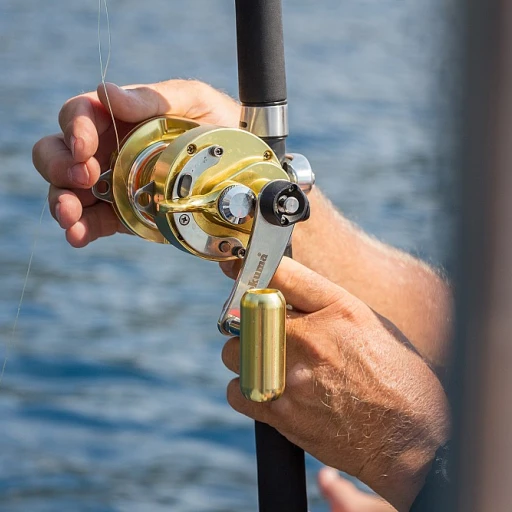

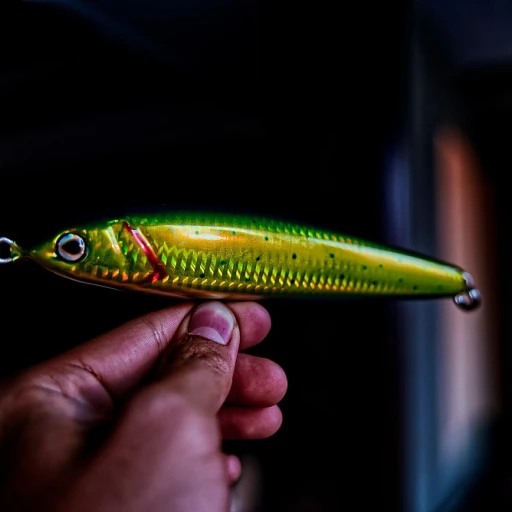
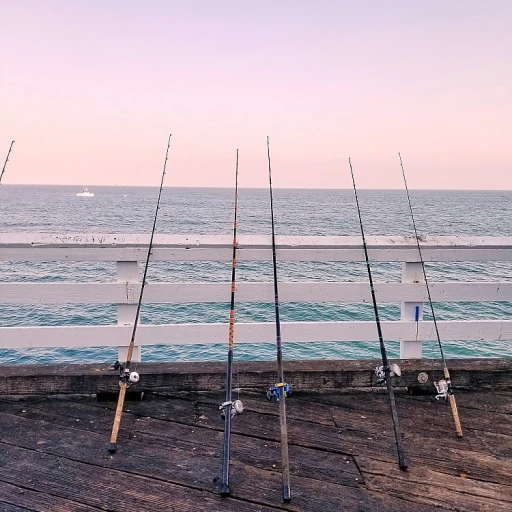
-large-teaser.webp)
